Little Of This, Litte Of That
Sat Nov 15, 2014 8:54 pm
I was trying to do a thing on the "Cold War", & I just feel, I just cannot finish that like I want so; here is "A Little This, & A Little That.  All photos are from the U.S.F.G., unless otherwise noted!
All photos are from the U.S.F.G., unless otherwise noted!
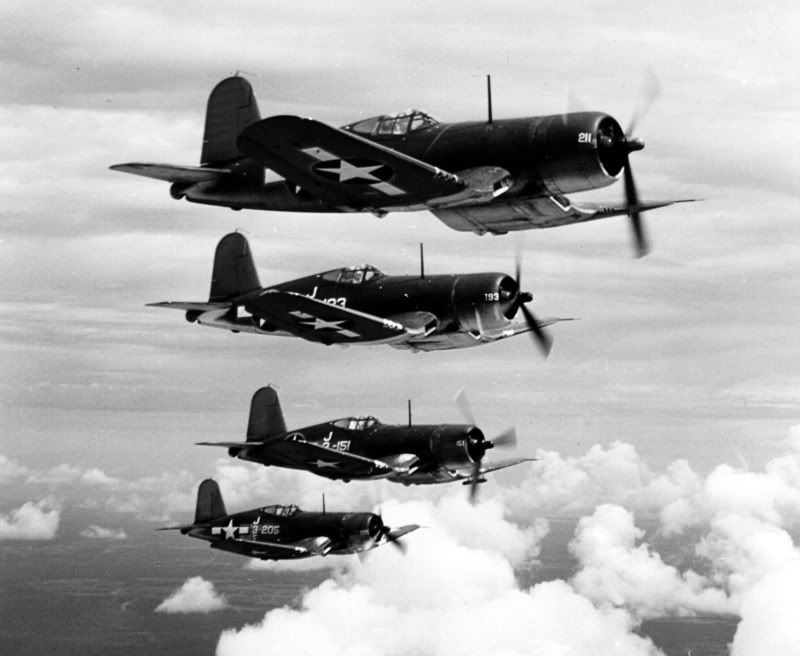
Four U.S. Navy Vought F4U-1 Corsair fighters over Naval Air Station Jacksonville, Florida (USA) in 1944. -
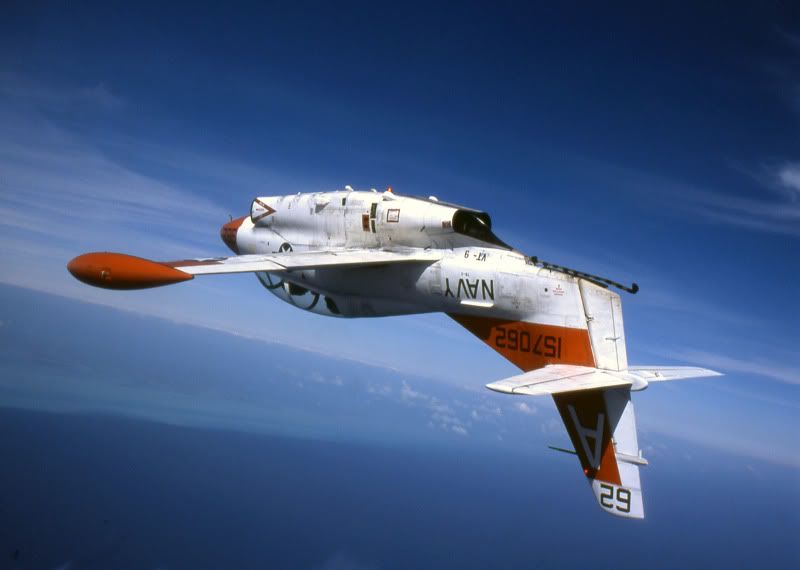
Key West, Fla. (Mar. 3, 2004) – Ens. Myciel Scott, a student pilot assigned to the “Tigers†of Training Squadron Nine (VT-9), with Maj. Tim Harp (USMCR), an instructor with VT-9, demonstrate formation flying in a T-2C “Buckeyes†during a formation training mission over Key West, Fla. VT-9 came to Key West to teach Navy and Marine Corps student pilots formation flying and gunnery techniques. The instructors are part of Squadron Augment Unit Nine (SAU-9), the Reserve component for Training Squadron Nine (VT-9), one of two training squadrons that operate from Naval Air Station Meridian, Miss., under Training Wing One (TW-1)
-
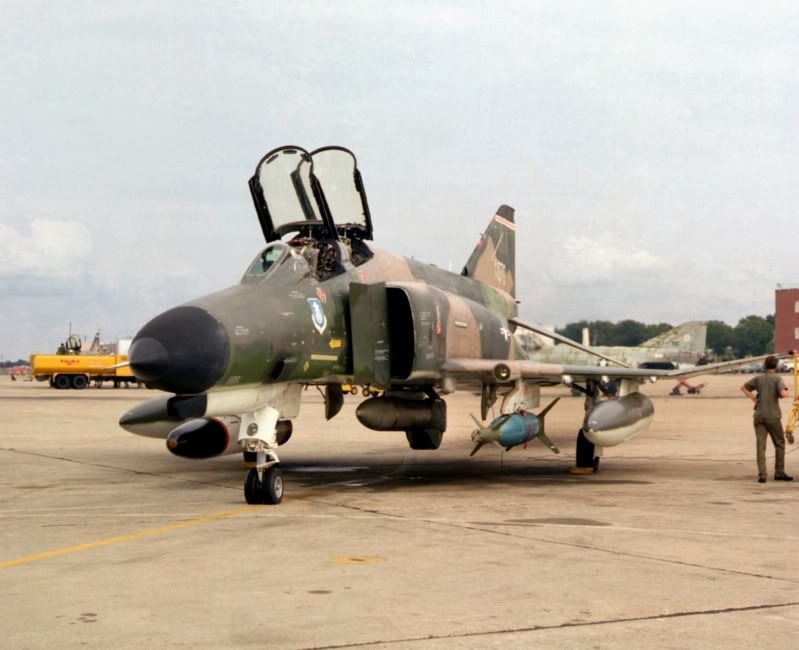
A U.S. Air Force Air Systems Command McDonnell Douglas F-4E-49-MC Phantom II aircraft (s/n 71-1070) equipped with an underwing fuel tank, an SUU(-7?) bomb dispenser, a Pave Tack laser targeting pod, a GBU-10 laser guided bomb and another underwing tank, at Eglin Air Force Base, Florida (USA), on 9 December 1976
-
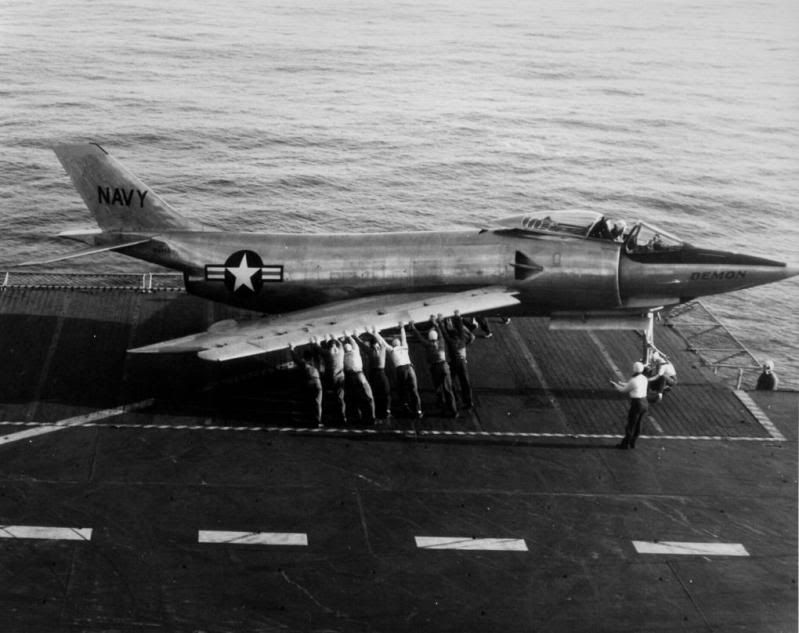
The second McDonnell XF3H-1 Demon prototype (BuNo 125445) being pushed on the port elevator during carrier trials aboard the aircraft carrier USS Coral Sea (CVA-43) in October 1953 -
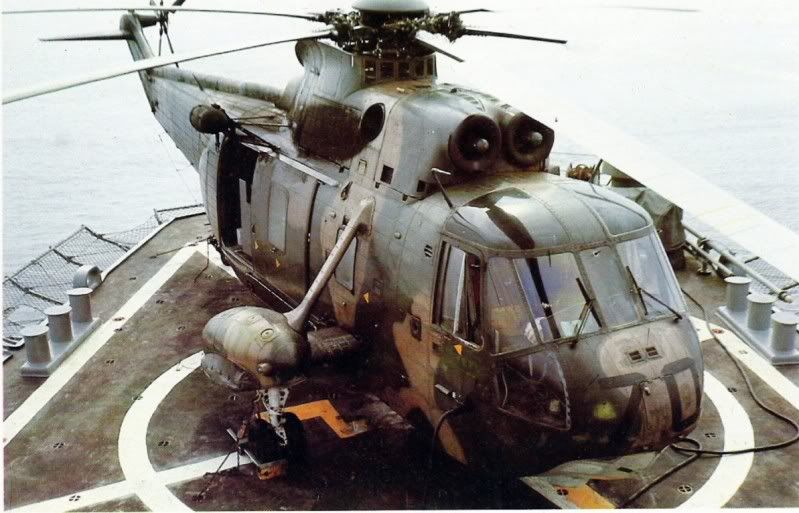
A camouflaged U.S. Navy Sikorsky SH-3A Sea King helicopter on the fantail of the guided missile destroyer USS Mahan (DLG-11) in May 1967. The U.S. Navy stripped several SH-3As of their ASW-equipment and used them for armed search-and-rescue missions in the Gulf of Tonkin and North Vietnam. This helicopter was assigned to helicopter anti-submarine squadron HS-2 Golden Falcons as part of Carrier Anti-Submarine Air Group 57 (CVSG-57) aboard the aircraft carrier USS Hornet (CVS-12). However, the SAR-helicopters were often based on guided missile destroyers (then called "frigates"), which had small landing pads with less than one meter clearance to the superstructure. This SH-3A, BuNo 148985 (tail code NV-70), was lost at sea two weeks after this photograph was taken on 23 May 1967, with the loss of the crew of four. -
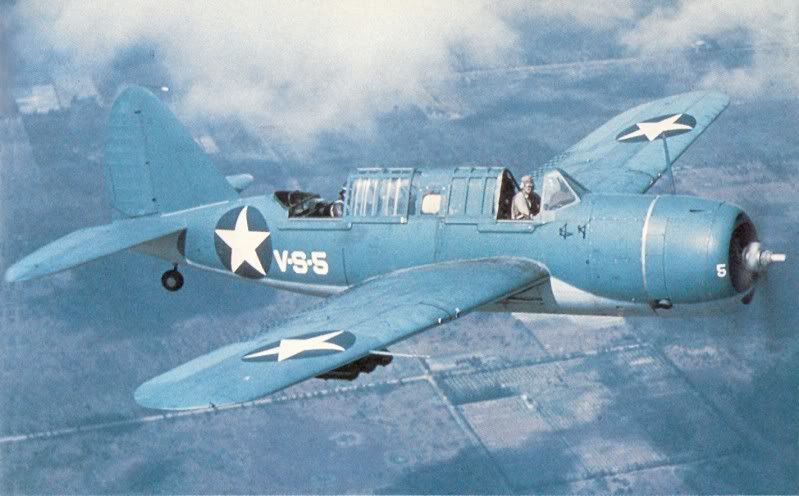
A U.S. Navy Brewster SB2A-4 Buccaneer in flight near Vero Beach, Florida (USA), in 1942/43 -
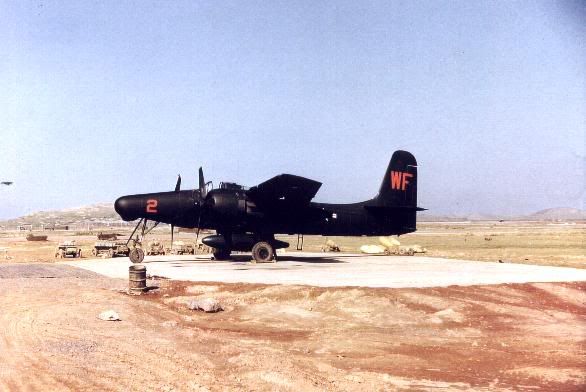
A Grumman F7F-3N Tigercat night fighter of Marine night fighter squadron VMF(N)-513 Flying Nightmares at Wonsan, Korea, in 1952
-
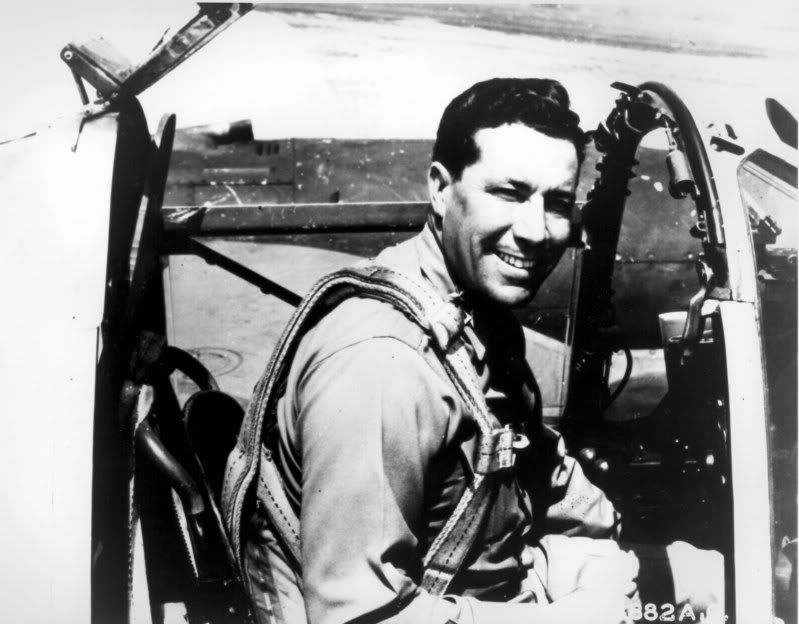
Captain Elwood R. Quesada, assigned to intelligence in the Office of the Chief of Air Corps in October 1940, went on to become commanding general of the 9th Fighter Command where he established advanced Headquarters on the Normandy beachhead on D-Day plus one, and directed his planes in aerial cover and air support for the Allied invasion of the continent."
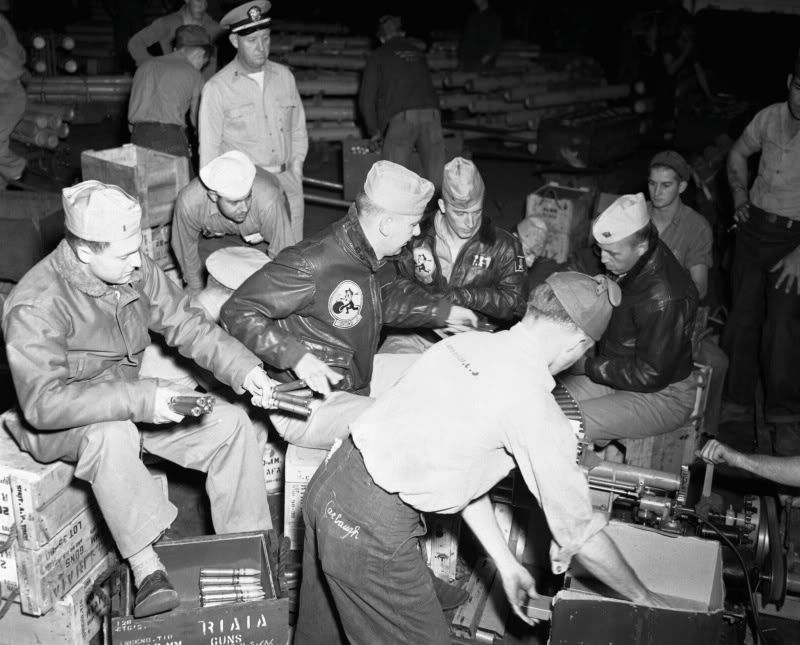
Pilots of fighter squadron VF-31 Tomcatters aboard the U.S. aircraft carrier USS Leyte (CV-32) help enlisted men belt 20 mm cannon shells during the Korean War on 7 November 1950 -
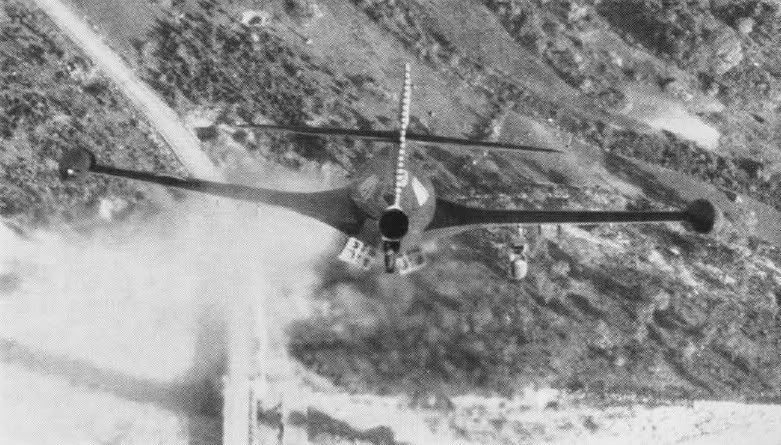
The second of two photographs showing the bombing of a bridge during the Korean War. A Grumman F9F-2 Panther of fighter squadron VF-71, piloted by Lt. R. P. Yeatman, has fired the HVAR rockets under the wings (hence the smoke) and already dropped the left 113 kg (250 lb) bomb. The bomb under the right wing is just coming off. VF-71 was assigned to Carrier Air Group Seven (CVG-7) aboard the U.S. aircraft carrier USS Bon Homme Richard (CVA-31), which was deployed to Korea from 20 May 1952 to 8 January 1953. VF-71 had the tail code "L-1XX" during that deployment -

USS Oriskany (CV-34) with a North American AJ-1 Savage attack plane on her flight deck. The image is dated 29 August 1952, when Oriskany was operating off the U.S. west coast, preparing for her first Korean War deployment. -
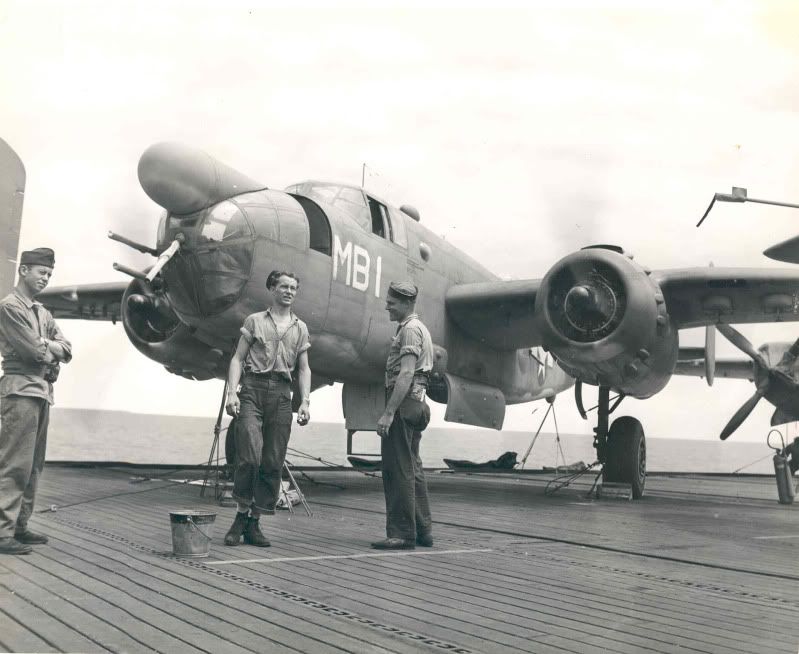
A North American PBJ-1D Mitchell bomber of U.S. Marine Corps bombing squadron VMB-611 spotted on the deck of the escort carrier USS Manila Bay (CVE-61) during transport of the squadron's flight echelon to its operating area in the Pacific, August 1944. -
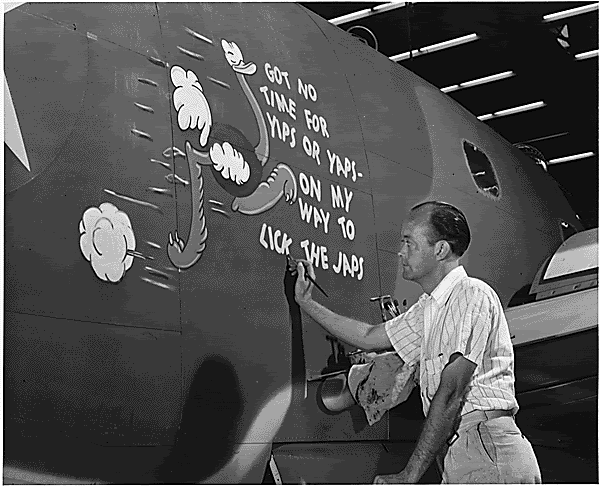
A worker applying nose art on a Lockheed PV-1 Ventura patrol bomber, ca. May 1942. Original text: "George ("Randy") McCraw, decorating a Vega Ventura bomber. Every ship that rolls off the line carries a cartoon aimed at the Axis. , ca. 05/1942." -
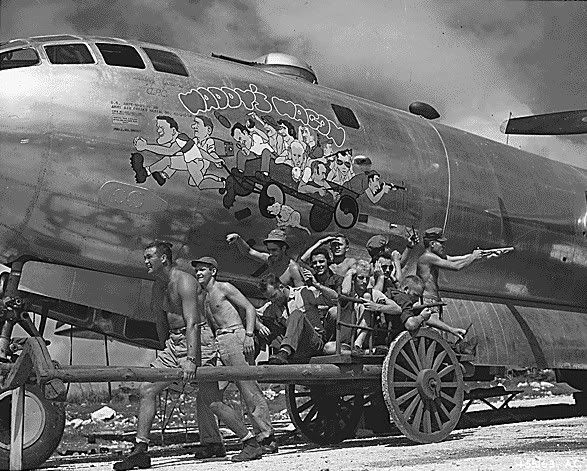
This is one of my most favorite WW2 photos, however it is one of the saddest story of brave young men giving all to help fellow airmen. "Waddys Wagon" had made their bomb run, & turned around to help another B-29 that had been damaged, & was under attack from enemy aircraft. "Waddys Wagon" was lost!
The crew of the USAAF Boeing B-29-40-BW Superfortress (s/n 42-24598) "Waddy's Wagon", 20th Air Force, 73rd Bomb Wing, 497th Bomb Group, 869th Bomb Squadron, the fifth B-29 to take off on the first Tokyo mission from Saipan on 24 November 1944, and first to land back at Isley Field after bombing the target. The crew is posing to duplicate their caricatures in the nose art. The crew (l-r): Capt. Walter "Waddy" Young/pilot, Lt. Jack Vetters/copilot, Lt. John F. Ellis/bombardier , Lt. Paul Garrison/navigator, Sgt. George Avon/radio operator, Lt. Bernard Black/flight engineer, Sgt. Kenneth Mansie/flight technican, Sgt. Lawrence Lee/gunner, Sgt. Wilbur Chapman/gunner, Sgt. Corbett Carnegie/gunner, Sgt. Joseph Gatto/gunner. This aircraft was lost on 9 January 1945 -
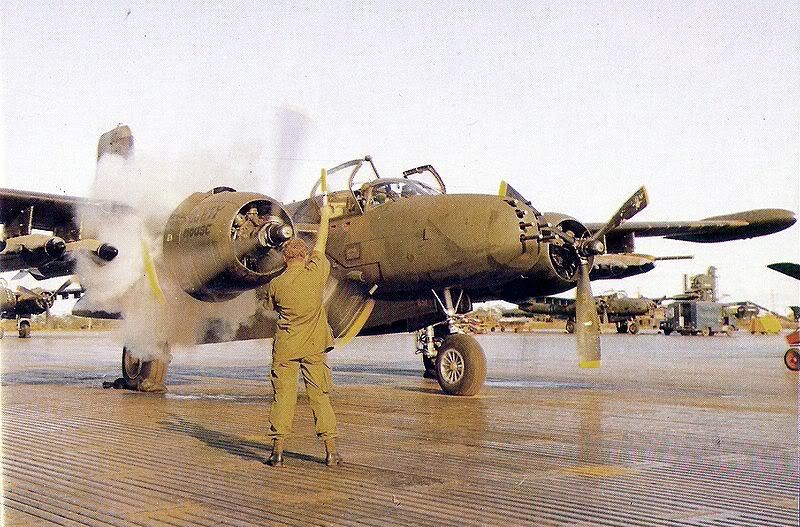
A USAF Douglas/On Mark A-26K Invader of the 609th Special Operations Squadron starting its engines at Nakhon Phanom Royal Thai Air Force Base, about 1969. -
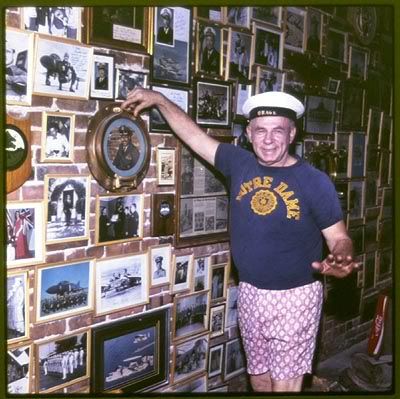
TRADER JON Source: I don't remember
If you went through P-Cola in the "old days", I hope you went to my dear old fiend's place "TRADER JONS"
A few more from TRADER:
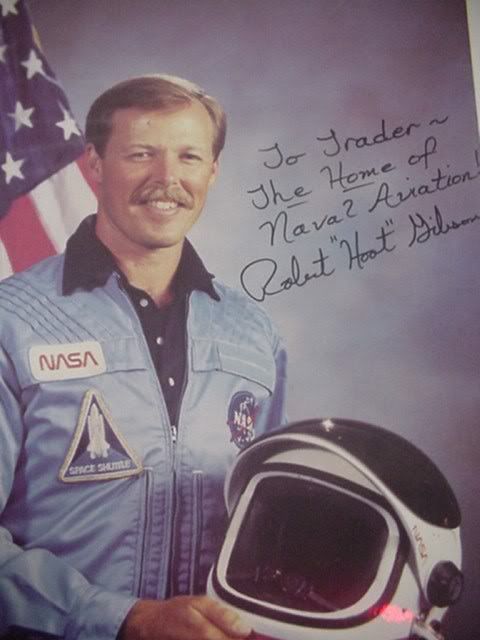
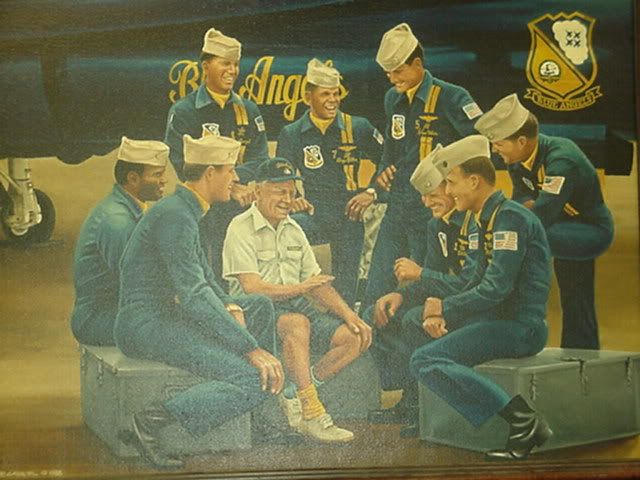

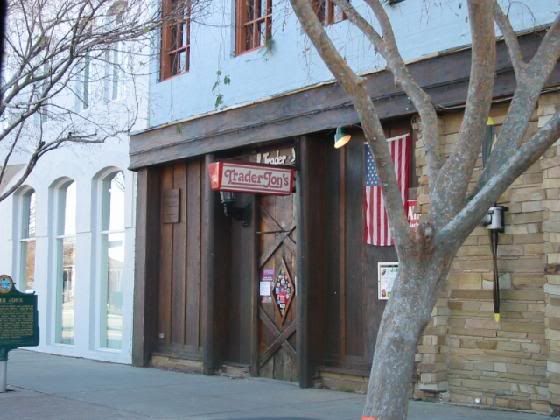
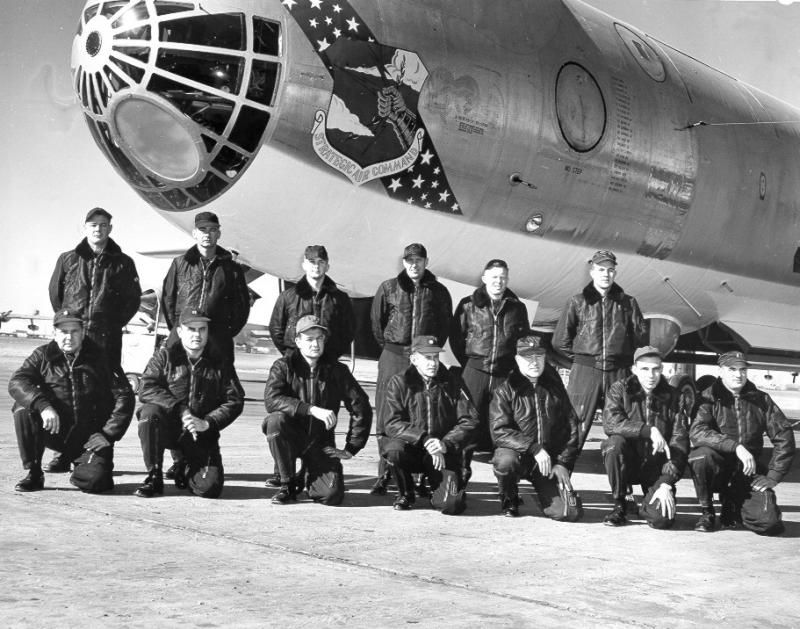
TEAPOT - 11TH BOMB WING CREW PARTICIPATES IN TEAPOT OPERATION - CARSWELL AFB, TEXAS. Left to right, front row: Lt. Col. Fred D. McKinney, aircraft commander; Captain Joseph J. Tyler, 1st. Pilot; 1/Lt. Dan J. Leadley, co-pilot; Lt. Col. Louis J. Obus, Radar operator; Major Aubrey S. Perry, Navigator; 2nd. Lt. Richard A. McLaughlin, co-observer; 1/Lt. Andrew J. Stough, 1st. Engineer. Back row, left to right: T/Sgt. Samuel S. Perryman, second engineer; M/Sgt. Otto Stroud, 1st. Radio operator; M/Sgt. Paul M. Nelson, 2nd. Radio operator; M/Sgt. Leonard L. Carter, chief gunner; A/1C William Cates, gunner; and A/1c Lennie Plummer, gunner. Operation Teapot was a series of fourteen nuclear test explosions conducted at the Nevada Test Site in the first half of 1955. It was preceded by Operation Castle, and followed by Operation Wigwam. Wigwam was, administratively, a part of Teapot, but it is usually treated as a class of its own. The aims of the operation were to establish military tactics for ground forces on a nuclear battlefield and to improve the nuclear weapons used for strategic delivery. -
/
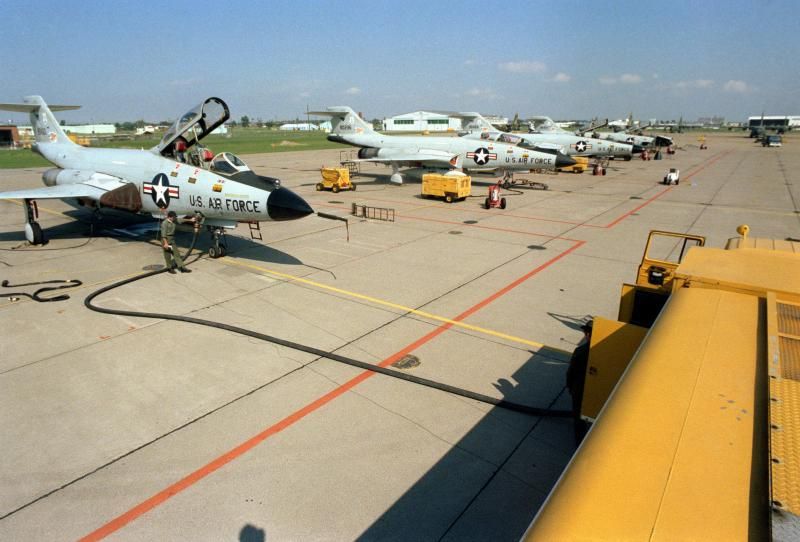
A U.S. Air National Guard McDonnell F-101B Voodoo aircraft in a line while undergoing general maintenance. The aircraft were assigned to the 107th Fighter Interceptor Group, New York Air National Guard, at Niagara Falls Air Base, New York
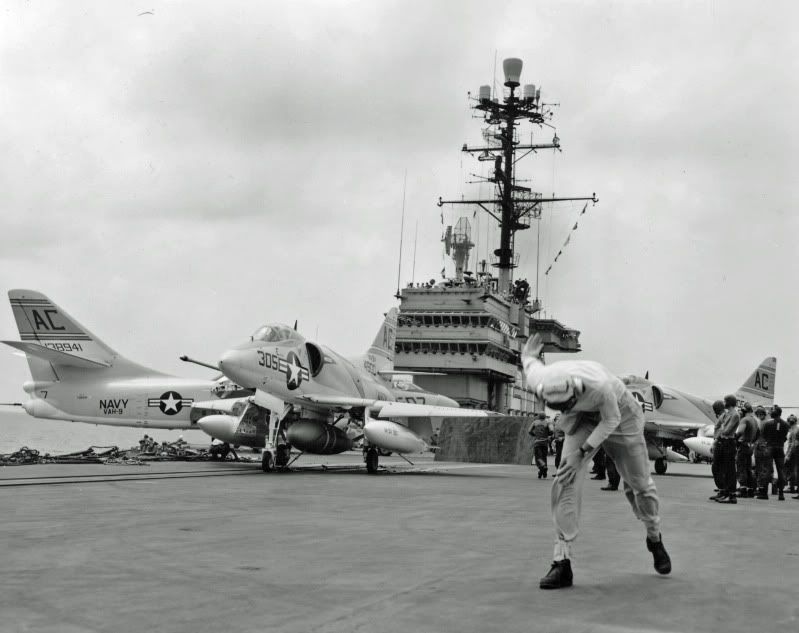
A-4B with Mk 7 bomb on cat USS Saratoga.jpg English: A U.S. Navy Douglas A4D-2 Skyhawk (BuNo 144900) of VA-34 Blue Blasters armed with an Mk 7 nuclear weapon prepares to launch from the aircraft carrier USS Saratoga (CVA-60). VA-34 was assigned to Carrier Air Group 3 (CVG-3) aboard the Saratoga flying the A4D-2 (after 1962 A-4B) between 1959 and 1962. -
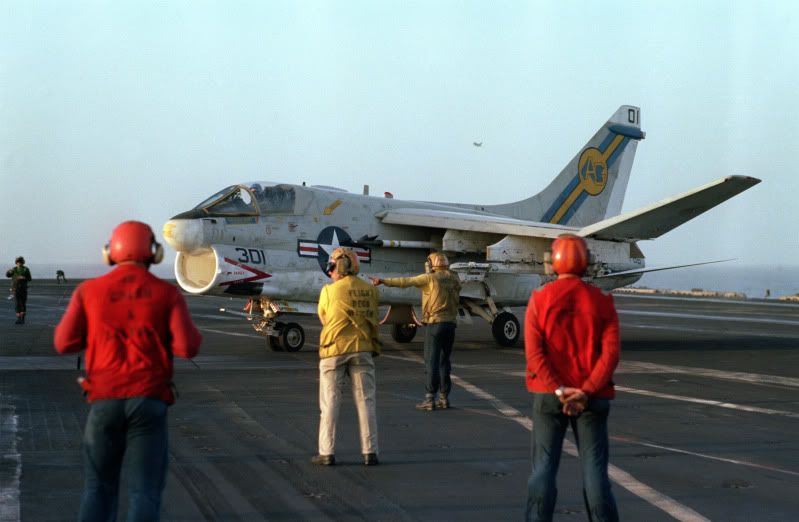
A U.S. Navy LTV A-7E Corsair II aircraft from attack squadron VA-66 Waldos, Carrier Air Wing 7 (CVW-7), folding its wings after landing on the aircraft carrier USS Dwight D. Eisenhower (CVN-69) on 6 July 1980. -
That's Bout It For Now!
Robbie

Four U.S. Navy Vought F4U-1 Corsair fighters over Naval Air Station Jacksonville, Florida (USA) in 1944. -

Key West, Fla. (Mar. 3, 2004) – Ens. Myciel Scott, a student pilot assigned to the “Tigers†of Training Squadron Nine (VT-9), with Maj. Tim Harp (USMCR), an instructor with VT-9, demonstrate formation flying in a T-2C “Buckeyes†during a formation training mission over Key West, Fla. VT-9 came to Key West to teach Navy and Marine Corps student pilots formation flying and gunnery techniques. The instructors are part of Squadron Augment Unit Nine (SAU-9), the Reserve component for Training Squadron Nine (VT-9), one of two training squadrons that operate from Naval Air Station Meridian, Miss., under Training Wing One (TW-1)
-

A U.S. Air Force Air Systems Command McDonnell Douglas F-4E-49-MC Phantom II aircraft (s/n 71-1070) equipped with an underwing fuel tank, an SUU(-7?) bomb dispenser, a Pave Tack laser targeting pod, a GBU-10 laser guided bomb and another underwing tank, at Eglin Air Force Base, Florida (USA), on 9 December 1976
-

The second McDonnell XF3H-1 Demon prototype (BuNo 125445) being pushed on the port elevator during carrier trials aboard the aircraft carrier USS Coral Sea (CVA-43) in October 1953 -

A camouflaged U.S. Navy Sikorsky SH-3A Sea King helicopter on the fantail of the guided missile destroyer USS Mahan (DLG-11) in May 1967. The U.S. Navy stripped several SH-3As of their ASW-equipment and used them for armed search-and-rescue missions in the Gulf of Tonkin and North Vietnam. This helicopter was assigned to helicopter anti-submarine squadron HS-2 Golden Falcons as part of Carrier Anti-Submarine Air Group 57 (CVSG-57) aboard the aircraft carrier USS Hornet (CVS-12). However, the SAR-helicopters were often based on guided missile destroyers (then called "frigates"), which had small landing pads with less than one meter clearance to the superstructure. This SH-3A, BuNo 148985 (tail code NV-70), was lost at sea two weeks after this photograph was taken on 23 May 1967, with the loss of the crew of four. -

A U.S. Navy Brewster SB2A-4 Buccaneer in flight near Vero Beach, Florida (USA), in 1942/43 -

A Grumman F7F-3N Tigercat night fighter of Marine night fighter squadron VMF(N)-513 Flying Nightmares at Wonsan, Korea, in 1952
-

Captain Elwood R. Quesada, assigned to intelligence in the Office of the Chief of Air Corps in October 1940, went on to become commanding general of the 9th Fighter Command where he established advanced Headquarters on the Normandy beachhead on D-Day plus one, and directed his planes in aerial cover and air support for the Allied invasion of the continent."

Pilots of fighter squadron VF-31 Tomcatters aboard the U.S. aircraft carrier USS Leyte (CV-32) help enlisted men belt 20 mm cannon shells during the Korean War on 7 November 1950 -

The second of two photographs showing the bombing of a bridge during the Korean War. A Grumman F9F-2 Panther of fighter squadron VF-71, piloted by Lt. R. P. Yeatman, has fired the HVAR rockets under the wings (hence the smoke) and already dropped the left 113 kg (250 lb) bomb. The bomb under the right wing is just coming off. VF-71 was assigned to Carrier Air Group Seven (CVG-7) aboard the U.S. aircraft carrier USS Bon Homme Richard (CVA-31), which was deployed to Korea from 20 May 1952 to 8 January 1953. VF-71 had the tail code "L-1XX" during that deployment -

USS Oriskany (CV-34) with a North American AJ-1 Savage attack plane on her flight deck. The image is dated 29 August 1952, when Oriskany was operating off the U.S. west coast, preparing for her first Korean War deployment. -

A North American PBJ-1D Mitchell bomber of U.S. Marine Corps bombing squadron VMB-611 spotted on the deck of the escort carrier USS Manila Bay (CVE-61) during transport of the squadron's flight echelon to its operating area in the Pacific, August 1944. -

A worker applying nose art on a Lockheed PV-1 Ventura patrol bomber, ca. May 1942. Original text: "George ("Randy") McCraw, decorating a Vega Ventura bomber. Every ship that rolls off the line carries a cartoon aimed at the Axis. , ca. 05/1942." -

This is one of my most favorite WW2 photos, however it is one of the saddest story of brave young men giving all to help fellow airmen. "Waddys Wagon" had made their bomb run, & turned around to help another B-29 that had been damaged, & was under attack from enemy aircraft. "Waddys Wagon" was lost!
The crew of the USAAF Boeing B-29-40-BW Superfortress (s/n 42-24598) "Waddy's Wagon", 20th Air Force, 73rd Bomb Wing, 497th Bomb Group, 869th Bomb Squadron, the fifth B-29 to take off on the first Tokyo mission from Saipan on 24 November 1944, and first to land back at Isley Field after bombing the target. The crew is posing to duplicate their caricatures in the nose art. The crew (l-r): Capt. Walter "Waddy" Young/pilot, Lt. Jack Vetters/copilot, Lt. John F. Ellis/bombardier , Lt. Paul Garrison/navigator, Sgt. George Avon/radio operator, Lt. Bernard Black/flight engineer, Sgt. Kenneth Mansie/flight technican, Sgt. Lawrence Lee/gunner, Sgt. Wilbur Chapman/gunner, Sgt. Corbett Carnegie/gunner, Sgt. Joseph Gatto/gunner. This aircraft was lost on 9 January 1945 -

A USAF Douglas/On Mark A-26K Invader of the 609th Special Operations Squadron starting its engines at Nakhon Phanom Royal Thai Air Force Base, about 1969. -

TRADER JON Source: I don't remember
If you went through P-Cola in the "old days", I hope you went to my dear old fiend's place "TRADER JONS"
A few more from TRADER:





TEAPOT - 11TH BOMB WING CREW PARTICIPATES IN TEAPOT OPERATION - CARSWELL AFB, TEXAS. Left to right, front row: Lt. Col. Fred D. McKinney, aircraft commander; Captain Joseph J. Tyler, 1st. Pilot; 1/Lt. Dan J. Leadley, co-pilot; Lt. Col. Louis J. Obus, Radar operator; Major Aubrey S. Perry, Navigator; 2nd. Lt. Richard A. McLaughlin, co-observer; 1/Lt. Andrew J. Stough, 1st. Engineer. Back row, left to right: T/Sgt. Samuel S. Perryman, second engineer; M/Sgt. Otto Stroud, 1st. Radio operator; M/Sgt. Paul M. Nelson, 2nd. Radio operator; M/Sgt. Leonard L. Carter, chief gunner; A/1C William Cates, gunner; and A/1c Lennie Plummer, gunner. Operation Teapot was a series of fourteen nuclear test explosions conducted at the Nevada Test Site in the first half of 1955. It was preceded by Operation Castle, and followed by Operation Wigwam. Wigwam was, administratively, a part of Teapot, but it is usually treated as a class of its own. The aims of the operation were to establish military tactics for ground forces on a nuclear battlefield and to improve the nuclear weapons used for strategic delivery. -
/

A U.S. Air National Guard McDonnell F-101B Voodoo aircraft in a line while undergoing general maintenance. The aircraft were assigned to the 107th Fighter Interceptor Group, New York Air National Guard, at Niagara Falls Air Base, New York

A-4B with Mk 7 bomb on cat USS Saratoga.jpg English: A U.S. Navy Douglas A4D-2 Skyhawk (BuNo 144900) of VA-34 Blue Blasters armed with an Mk 7 nuclear weapon prepares to launch from the aircraft carrier USS Saratoga (CVA-60). VA-34 was assigned to Carrier Air Group 3 (CVG-3) aboard the Saratoga flying the A4D-2 (after 1962 A-4B) between 1959 and 1962. -

A U.S. Navy LTV A-7E Corsair II aircraft from attack squadron VA-66 Waldos, Carrier Air Wing 7 (CVW-7), folding its wings after landing on the aircraft carrier USS Dwight D. Eisenhower (CVN-69) on 6 July 1980. -
That's Bout It For Now!
Robbie
Last edited by Robbie Stuart on Sun Nov 16, 2014 4:03 pm, edited 1 time in total.
Re: Little Of This, Litte Of That
Sun Nov 16, 2014 2:11 am
That pic of the PBJ's - is that a B-26 in the background? A Marauder flown from a carrier? Or am I just jumping to conclusions here?
Tricycle gear, four bladed props, intakes above cowl - don't think it's a P-61 and don't know what else it could be. How'd they get it off he deck? Were there B-26s in the area at that time?
Tricycle gear, four bladed props, intakes above cowl - don't think it's a P-61 and don't know what else it could be. How'd they get it off he deck? Were there B-26s in the area at that time?
Re: Little Of This, Litte Of That
Sun Nov 16, 2014 2:43 am
Ok, a little research sure they are JM-1s, but almost certainly not flown off the carrier
Re: Little Of This, Litte Of That
Sun Nov 16, 2014 10:30 am
Great pictures. I especially liked the ones of Trader Jon's and the Blues. Brings back some nice memories of my younger days here in P'cola.
Bill
Bill
Re: Little Of This, Litte Of That
Sun Nov 16, 2014 1:26 pm
Loved the Trader Jon's pictures. I was sorry that they couldn't save it after Jon passed away. Did the photos on the wall get saved?
My 16 year old daughter has a thing for wearing mis-matched socks and every time I see her that way I smile to myself and think of Jon.
My 16 year old daughter has a thing for wearing mis-matched socks and every time I see her that way I smile to myself and think of Jon.
Re: Little Of This, Litte Of That
Sun Nov 16, 2014 4:16 pm
Speedy wrote:Loved the Trader Jon's pictures. I was sorry that they couldn't save it after Jon passed away. Did the photos on the wall get saved?
My 16 year old daughter has a thing for wearing mis-matched socks and every time I see her that way I smile to myself and think of Jon.
This is last I heard of what happened to all of Trader's stuff, except for some things his daughters had and auctioned off. I think the pictures I posted came from an advertisement from the auction house that I can't remember the name of (I emailed them & got permission to use the pics several years ago) . Anyway here's a link that might help, this is the last I heard, http://www.pensapedia.com/wiki/Trader_Jon%27s
Robbie